Smoke Taint in Wine
- February 12, 2024
We have lived through several wildfires, but none was more impactful or harrowing than the Kincade Fire – it began on October 23, 2019, just before 9:30 pm, 18 miles as the crow flies (or as fires burn) from our ranch. The conditions (high winds with gusts up to 76 mph) had warranted a Public Safety Power Shutoff (PSPS) imposed by our electric company PG&E. We received notification to prepare for evacuation around 10 pm. We packed up three cars, two cats and a dog and drove into the vineyard to stay safe. At 5:30 am, the fire had reached the valley floor about 1 mile from our property and we decided to leave. A local CalFire pilot, Bob Valette, made the first drop of fire retardant 100’ behind our house.
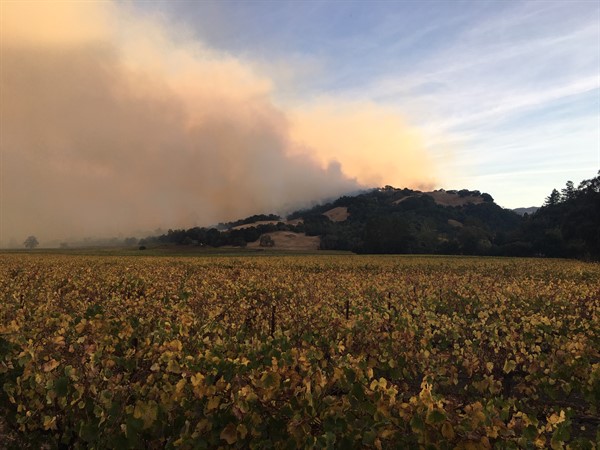
7:30 am on October 24, 2019
For us, October means harvest and we were in the thick of it. We had picked all of our Chardonnay, Malbec, Petit Verdot but less than half of our Cabernet Sauvignon. We were well aware of the impact of smoke taint. The Australian government first reported the impacts of smoke taint after bushfires in 2003, 2004 and 2005. Thanks to researchers in Australia and the US, the wine industry has developed a protocol to mitigate the effects of smoke taint and with every new incident, that protocol has been improved.
In 2017 (the Tubbs Fire) and 2018 (the Camp Fire), we had experienced smoky days, but we learned that most smoke taint comes from new, fresh smoke. Also, the stage of the growing season is key…the closer to harvest, the more susceptible the grapes are to smoke taint. There are several smoke taint markers; these compounds are volatile phenols (VP) that come from burning wood. VPs come in two forms: free and bound. Both are absorbed into the grape skins; for wines that are not fermented on the skins, the risk of smoke taint is greatly reduced. Free VPs can be released during fermentation, giving the wine an ashy quality especially in the aftertaste.
To mitigate the potential impact of smoke taint for the post-fire grapes, we did not do extended maceration (the wine is left on the skins to extract young tannins). As soon as the wine was finished fermenting, we drained the wine, pressed the skins and moved it to barrels. We wanted the wine off the skins as fast as possible to lessen any smoke taint. We sent our wine to be tested for the specific VPs (guaiacol and 4-methylguaiacol) and the results were surprisingly low.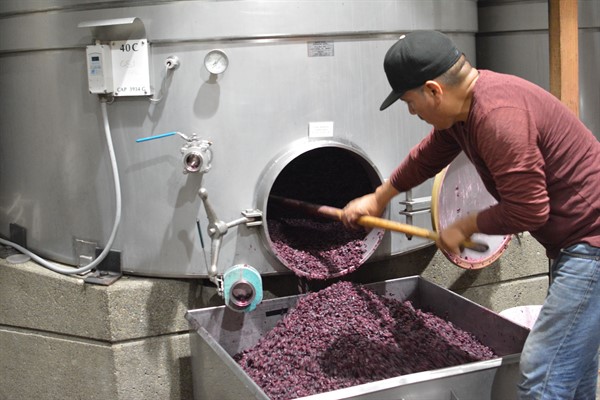 Smoke taint comes from burning wood; what do we age our wine in? Toasted oak barrels! (To cure the wood, barrel makers toast the inside of the barrel using the same wood they used to make the barrel.) Even though our results for smoke taint were low, we used neutral (older) barrels to lessen any influence of smoke taint. If you tested a wine that was not affected by a fire, but was aged in toasted oak barrels, test results could show that the wine had some smoke taint markers.
Smoke taint comes from burning wood; what do we age our wine in? Toasted oak barrels! (To cure the wood, barrel makers toast the inside of the barrel using the same wood they used to make the barrel.) Even though our results for smoke taint were low, we used neutral (older) barrels to lessen any influence of smoke taint. If you tested a wine that was not affected by a fire, but was aged in toasted oak barrels, test results could show that the wine had some smoke taint markers.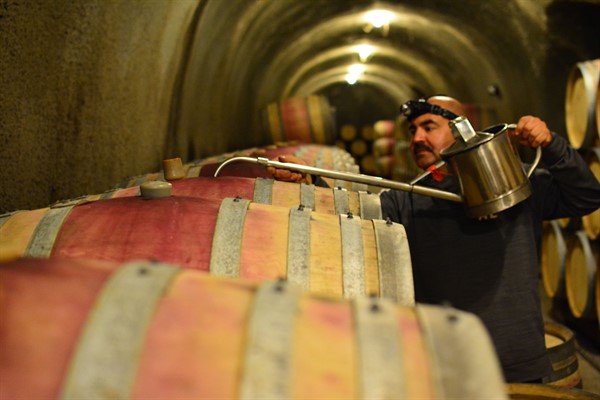 The key element of our work is tasting whether it’s in the vineyard deciding when to pick or making a blend at the winery. And we never make a winemaking decision based on just one tasting; there are always several and it is consistency of results that what matters most. An interesting fact about smoke taint is approximately 25% of people cannot taste it.
The key element of our work is tasting whether it’s in the vineyard deciding when to pick or making a blend at the winery. And we never make a winemaking decision based on just one tasting; there are always several and it is consistency of results that what matters most. An interesting fact about smoke taint is approximately 25% of people cannot taste it.
We began tasting our lots for Cabernet (pre-fire and post) in December and continued through February. Initially, the smoke taint was almost undetectable, but as the wine aged, the smoke taint intensified. Sarah and Ricardo were able to identify the post-fire wine at every tasting; I was not. Their tasting notes were so consistent that I relied on their results over my own. Typically, when tasting, the aromas are key, but with smoke taint, the smoky notes can be appealing. It is in the mouthfeel and aftertaste that smoke taint reveals its unpleasant character…a drying ashtray quality that lingers long after the wine has been tasted.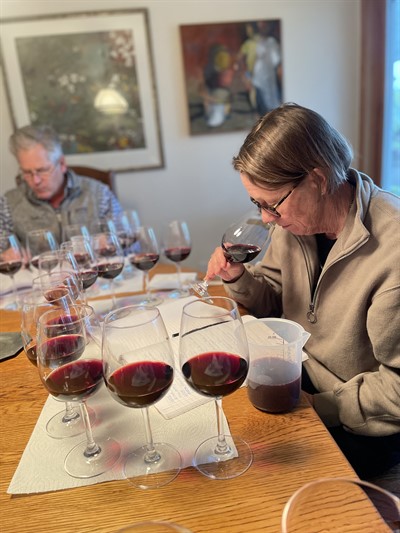 On the one hand it was a difficult decision to sell over half of our production of Cabernet in bulk, but on the other, it was easy. For us, it is important to maintain the high quality of the wines we produce. Hence, we decided to sell all of the post-fire wines in bulk to other wineries.
On the one hand it was a difficult decision to sell over half of our production of Cabernet in bulk, but on the other, it was easy. For us, it is important to maintain the high quality of the wines we produce. Hence, we decided to sell all of the post-fire wines in bulk to other wineries.
I am pleased to release our 2019 Cabernet Sauvignon. Only 1,416 cases were bottled under the Hafner label (less than half of our normal production). It was a difficult, but educational year. Thanks to the work of UC Davis, Washington State University, Australian Wine Research Institute, ETS Lab and others, our industry is learning to adapt and mitigate the impacts of our warming climate.
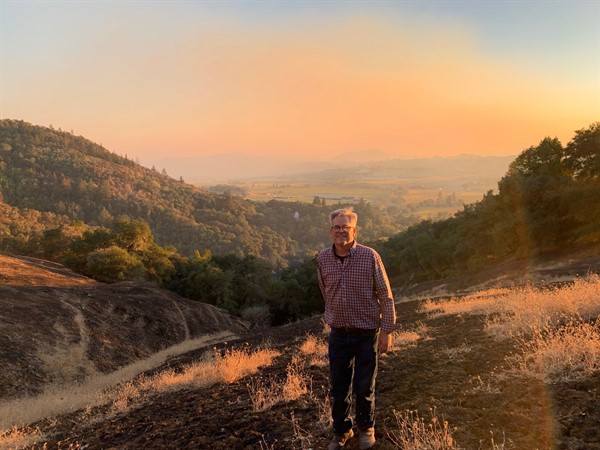 October 27, 2019.
October 27, 2019.
My son-in-law and I hiked the hills of the ranch to access the fire's path. We are extremely grateful to the firefighters for their courageous efforts that saved our buildings and vineyards. All things considered, we were very lucky; many neighbors and friends were deeply impacted by this fire losing homes and entire vintages.



